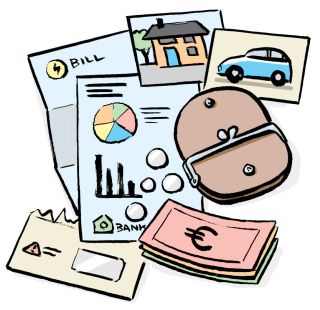The Energy Security Crisis

Directly related to the cost-of-living crisis, indeed one of the main drivers, is the cost of energy. More than half (59.5 per cent) of the increase in inflation to January 2023 was caused by increases in energy costs (CSO, 2023a). These increases have both direct and indirect effects. The direct effects in home heating and fuel costs see an almost immediate increase in household bills. The indirect effects, an increase in non-domestic energy bills, are passed on more slowly to the consumer (Lydon, 2022). Thus, notwithstanding recent decreases in the market price of fuel, the impact of energy price hikes will continue to be felt by households into the future as businesses attempt to recoup their additional costs through increasing the cost of provision of goods and services.
A lack of an adequate, sustainable energy source for Ireland has resulted in our reliance on energy imports. In 2021, Ireland’s energy import dependency was 80 per cent, compared to an EU average of 57.5 per cent. This means that we import four fifths of the energy we need. This is a decrease from the height of our dependency in 2006, when it was 91 per cent, however it has been increasing since 2017 when it was 67 per cent (SEAI, 2022). A 2020 report on energy security estimated the cost of energy imports in 2018 at €5 billion (SEAI, 2020). In 2010, the Russian-Ukrainian gas disputes disrupted supply in several EU countries and led to the introduction by the European Commission of regulations to safeguard supply into the future. A subsequent European Energy Security Strategy, stress-tested for two energy-disruption scenarios (the cessation of Russian gas imports into the EU, and a disruption to Russian gas imports through the Ukraine) highlighted the vulnerability of EU gas supply and resulted in the publication of the 2015 Energy Union Strategy which sought to diversify energy imports into Europe and provide for a more united EU energy market (SEAI, 2020). The current situation between Russia and Ukraine continues to test the efficacy of this Strategy.
As a percentage of primary energy supply, Ireland’s renewable energy was just 13.11 per cent in 2020, compared to an OECD total of 22.85 per cent (OECD, 2023). According to SEAI, indigenous production of energy has been decreasing since 2018, however 2021 was the first year in which indigenous production from renewables exceeded that from gas (SEAI, 2022). At just 1,650ktoe of a total of 13,852ktoe primary energy supply, however, Ireland still has a long way to go to meet our 2030 renewables targets.
Investment in renewable energy and retrofitting on the scale required to meet our national climate ambition and maintain energy security requires large scale investment in infrastructure. An upgrade of the national grid must be a key element of infrastructure investment so that communities, cooperatives, farms and individuals can produce renewable energy and sell what they do not use back into the national grid, thus becoming self-sustaining and contributing to our national targets. The economic and environmental impact of data centres will also require a review and revision if we are ever to reach a sustainable indigenous renewable energy supply.
The issues around renewable energy subsidies and energy poverty must be addressed. Too often subsidies are only taken up by those who can afford to make the necessary investments. Retrofitting is a prime example. Even with changes to these schemes introduced in 2022, those who need them most often cannot avail of them due to upfront costs, these subsidies are functioning as wealth transfers to those households on higher incomes while the costs (for example carbon taxes) are regressively socialised among all users. Incentives and tax structure must look at short- and long-term costs of different population segments; eliminating energy poverty and protecting people from energy poverty should be a key pillar of any Just Transition platform.
The latest retrofitting scheme, which sees increased supports to social welfare-dependent households, is very welcome, however more is needed for households who do not qualify and who cannot avail of other retrofitting schemes as they struggle to pay their bills. According to the Commission for Regulation of Utilities (CRU), over 237,350 domestic electricity customers (10 per cent) and 140,800 domestic gas customers (11 per cent) were in arrears at the end of H1 2022. Businesses were also struggling, with 34,600 non-domestic electricity customers (12 per cent) and 7,250 non-domestic gas customers (27 per cent) in arrears in the same period (Commission for Regulation of Utilities, 2022). One-off energy credits, such as those given in February 2022, following Budget 2023, and again in February 2023 will only help households in the month in which they are given. They are a wholly inadequate response to an ongoing and persistent crisis.
Commission for Regulation of Utilities. (2022). Energy and Water Monitoring Report for H1 2022. Dublin: Commission for Regulation of Utilities.
CSO. (2023a). Consumer Price Index January 2023. Dublin: Central Statistics Office.
Lydon, R. (2022). Household characteristics, Irish inflation and the cost of living. Ireland: Central Bank of Ireland.
OECD. (2023). Covid-19 Recovery Dashboard. Paris: OECD.
SEAI. (2022). Energy in Ireland 2022 Report. Dublin: SEAI.
SEAI. (2020). Energy Security in Ireland. Dublin: SEAI.